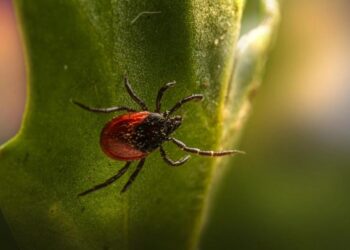Lyme disease is an illness associated with ticks. This disease is caused by a black-legged tick bite (deer tick) which introduces a type of bacteria called Borrelia Burgdorferi, through the bite.
This disease wasn’t popular until the 1970s, getting its name from Lyme, Connecticut. Lyme was where a bunch of kids started showing really weird symptoms that were similar to that of arthritis in the 1970s. This led to the discovery of the Borrelia Burgdorferi bacteria in 1982 by Dr. Willy Burgdorfer. Ever since, this disease has become one of the popular tick-borne illnesses, mostly around the U.S and Europe region.

How Common is Lyme Disease?
Lyme disease is quite common around northeastern and upper midwestern parts of the United States, but it can also be found in other places like Europe and Asia. According to a recent study recorded by the National Library of Medicine, it says that “in states where lyme disease is common, the incidence is about 40 per 100,000 people. The infection occurs during late spring, summer, and early fall.”
How Does Lyme Disease Occur?
A tick, black-legged tick to be specific, attaches itself to your skin for about 36 to 48 hours and sucks your blood. While feeding, the tick passes a bacterium called Borrelia Burgdorferi into your bloodstream. Once the bacteria gets into your body it begins to spread and multiply.
Symptoms of Lyme Disease
- Fever
- Headache
- Tiredness
- Joint pain
- Muscle aches
- Swollen lymph nodes in your neck, armpits, or groin
- A bullseye shaped rashes
- Heart palpitations
- Chills
- Stiff neck
Risk Factors for Lyme Disease
While Lyme disease can be caused by a bite of a black-legged tick, there are some things that can make it more likely for you to get Lyme. The first and obvious factor is staying in a tick infested place. Spending time in wooded, or grassy areas where ticks live makes it easier to get bitten.
If you like hiking, camping, or gardening in places where ticks are common, your risk of getting bitten goes up. The longer the tick stays on your skin, the more likely it is to pass on the bacteria. In addition, ticks are most active in warmer months, like late May through early September, so chances of getting this disease are higher during this time.
Bottom Line
Lyme disease is a tick-borne illness caused by the Borrelia burgdorferi bacteria, transmitted through the bite of a black-legged tick. First recognized in the 1970s in Lyme, Connecticut, it’s now common in the U.S. and Europe. The disease is most likely to occur in areas with high tick populations, especially during warmer months. Symptoms include fever, headaches, joint pain, and a bullseye-shaped rash.

















